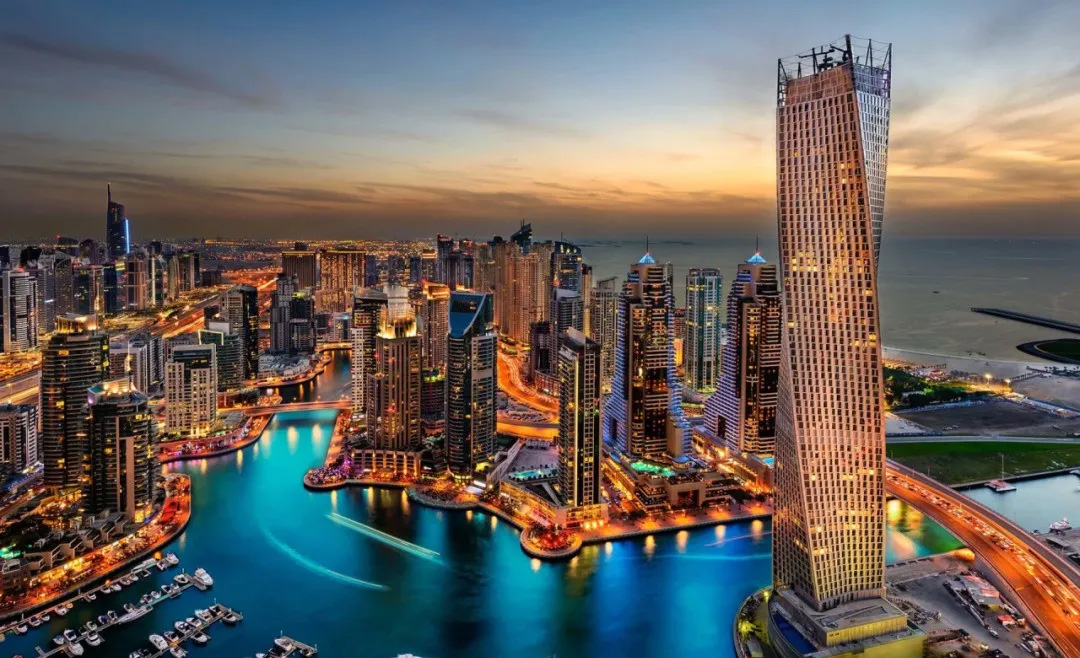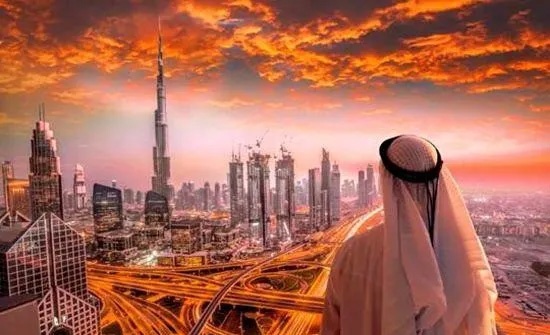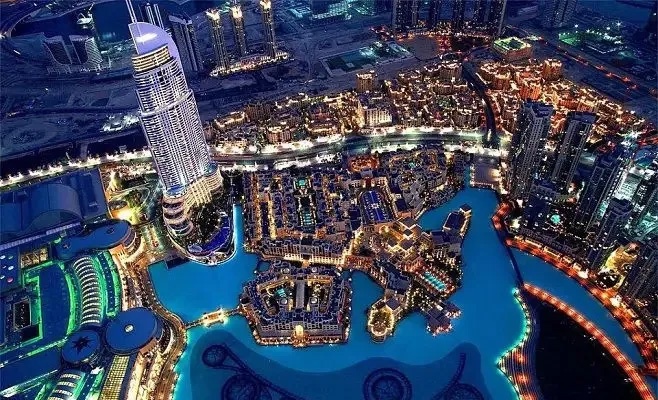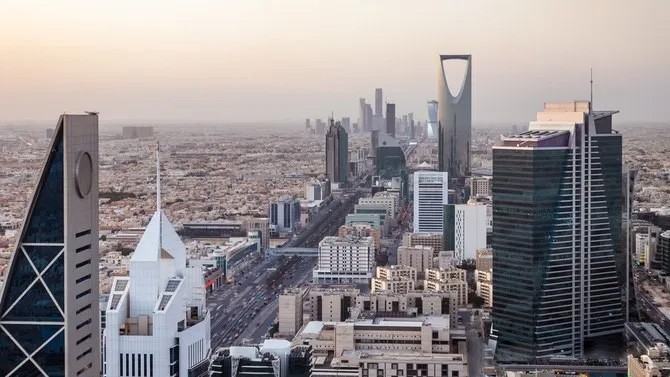
Preface
With the deepening of economic globalization, the United Arab Emirates ("UAE" for short) has become a hot spot for foreign investors in recent years due to its unique location advantages and open and inclusive investment policies. In order to help investors have a comprehensive and in-depth understanding of the investment environment and relevant policies and regulations in the UAE, we have specially prepared this guide. Here, you can not only obtain the latest developments in the economic and social development of the UAE and understand the salient features of the local business environment, but also find practical solutions to key foreign investment matters such as business establishment, labor and employment, taxation and other practical issues. Reference suggestions. I hope this guide can be a "timely rain" for you to expand into the UAE market and help you harvest the fruits of your dreams in this desert country full of opportunities.

1. Overview of the United Arab Emirates
Located in the eastern part of the Arabian Peninsula in southwest Asia, the United Arab Emirates borders Saudi Arabia and Oman. This country, with a total area of approximately 71,023.6 square kilometers, has a long coastline on the Persian Gulf. As a federal state composed of seven emirates including Abu Dhabi, Dubai, and Sharjah, the capital of the United Arab Emirates is the capital of the largest emirate, Abu Dhabi. The discovery of oil reserves kicked off the UAE's economic boom. Relying on abundant oil resources, the government vigorously develops oil exploration and refining industries and builds them into the foundation of the country. However, the Federation of Emirates was not content to sit back and enjoy resource dividends, but instead took stock of the situation and embarked on a new journey of diversified development. By continuously optimizing the industrial structure, vigorously introducing foreign investment, and accelerating the development of the tertiary industry, the UAE has successfully transformed from a single resource-exporting country to a diversified modern economy. In many fields such as air transportation, tourism services, finance, trade, real estate, etc. Great progress has been made. Currently, the non-oil economy accounts for more than 70% of GDP. At the same time, the government also attaches great importance to continuous investment in people's livelihood security, public services and other fields. Social undertakings such as medical and health care, education and scientific research have made comprehensive progress, and per capita GDP ranks among the top in the world.
2. Overview of the overall investment environment
To judge whether a country's investment environment is friendly, it is usually necessary to consider factors such as economic fundamentals, ease of doing business, regulatory policy orientation, infrastructure level, human resource endowment and other factors. For the UAE, it shows great investment attractiveness in all dimensions.
01 The UAE’s economic fundamentals are improving in the long term
Since the 1970s, driven by oil exports and large-scale government investment, the UAE economy has achieved rapid growth by leaps and bounds. After entering the 21st century, despite the ups and downs of the world economic situation, the UAE has still maintained a relatively stable development trend. According to World Bank statistics, the average annual GDP growth rate of the UAE in the past ten years has been around 5%, which is much higher than the world average during the same period. The per capita gross national income is more than 40,000 US dollars, ranking among the best in the world. Due to abundant foreign exchange earnings, the UAE dirham exchange rate remains pegged to the U.S. dollar, with long-term stability at around 3.67 dirhams per U.S. dollar, reducing the exchange rate risks of foreign investors.
02 The government continues to promote economic reform and optimize the business environment
In recent years, the UAE has eliminated many restrictions on investment access, foreign equity ratio restrictions, administrative approval procedures, and tax payment procedures, and has timely revised laws in key areas of concern to market entities such as company laws and bankruptcy laws. A business environment report released by the World Bank shows that the UAE ranks 16th among 190 economies in the world and ranks among the best in the Middle East. In order to further stimulate the vitality of entrepreneurship and innovation, the Federation of the Emirates has also formulated a systematic support policy for small and medium-sized enterprises to provide comprehensive support to start-up enterprises in financing, training, incubation and other aspects.
03 New progress continues to be made in regional integration
As a member of the GCC, the UAE actively participates in promoting cooperation among member states in areas such as capital, technology, and personnel mobility, and strives to create a unified market. The GCC Customs Union, formally established in 2003, has cleared tariff barriers for intra-regional trade liberalization. The standardization organizations under the GCC have also done a lot of work in unifying technical standards, inspection and testing procedures, etc. UAE companies can rely on the policy dividend of "one certification, regional access" to develop the entire GCC market at a lower cost. . With the help of the "Belt and Road" initiative, China-UAE production capacity cooperation has also shown a good situation of blooming in many places.
04 Infrastructure leads the world
Build the world's busiest airport, open the subway with the widest coverage in regions, and build a highway network connecting major cities. The UAE is a first-class The infrastructure has made up for the shortcomings of development and created unique logistics conditions for various enterprises. The annual passenger throughput of Dubai International Airport has exceeded 80 million, ranking first in the world for many consecutive years. Iconic buildings such as the Burj Khalifa and Palm Island further demonstrate the economic strength and construction speed of the emirate. Matching the hardware facilities are broadband networks throughout urban and rural areas, efficient and convenient e-government systems, and business and travel service supporting facilities such as business centers, exhibition venues, hotels, restaurants, and entertainment that are flourishing everywhere.
05 The social and cultural environment is becoming increasingly diverse and inclusive
The UAE is a highly internationalized country of immigrants, with more than 85% of the total population of 9.5 million being foreigners. Talents from all over the world gather here to build this desert continent with wisdom and creativity. At the same time, the UAE is also an Islamic country that advocates openness and tolerance, respects different cultural traditions and freedom of religious belief. Even during Ramadan, Muslims' fasting piety will not affect the normal life and work of non-Muslims. People of all ethnic groups coexist harmoniously here and use their combined strength to create a better tomorrow.
To sum up, from the perspective of multiple dimensions such as return on investment, ease of doing business, regional radiation capabilities, hardware and software supporting facilities, the UAE can be called an ideal destination for foreign investment.

3. New trends in economic development in the UAE
Entering the post-epidemic era, the UAE economy has recovered strongly. Data shows that the UAE's GDP will grow by 3.8% year-on-year in 2021, exceeding the pre-epidemic level, becoming the first economy in the Middle East to achieve a "V"-shaped reversal. At the same time, the UAE government has timely launched a package of reform measures and incentive plans to increase efforts to optimize the business environment, accelerate the construction of a modern economy, and build momentum for sustainable development in the "post-oil era".
(1) National level
In order to better leverage the employment capacity and innovation momentum of small and medium-sized enterprises, the UAE has formulated a national entrepreneurship and small and medium-sized enterprise development strategy. In the next few years, the government will continue to simplify administrative procedures, increase fiscal and tax support, improve the entrepreneurial incubation system, expand financing channels, and empower small and medium-sized enterprises in aspects such as government procurement and skills training. Strive to build the UAE into a hot spot for entrepreneurship full of innovation and vitality by 2031.
At the same time, the government has also introduced a broader federal corporate income tax law in order to speed up the pace of tax reform. Although the bill sets a tax exemption of 375,000 dirhams, and the excess is only levied at a low tax rate of 9%, it marks a solid step in the construction of a modern tax system in the UAE. At the level of talent introduction, the newly revised immigration law has significantly relaxed foreign residence restrictions and provided more policy conveniences for highly skilled talents. This series of reforms undoubtedly conveys to the world the determination of the UAE government to build a world-class business environment and attract global capital, technology, and talents.
(2) Social undertakings
In terms of social undertakings, in order to better ensure the employment of its citizens and achieve a balance between supply and demand in the labor market, the UAE has recently increased the employment quota ratio for its own people. In the long run, as the quality of education and training continues to improve, more and more domestic employees are expected to grow into the backbone of various industries. At the same time, the government has also launched a national unified unemployment insurance system to provide multiple protections for workers' rights and interests by reasonably sharing labor costs. In the fields of medical care, public education and other fields, thanks to the government's continued increase in investment, various people's livelihood undertakings have also made great progress.

4. Practical investment considerations
When planning for the UAE market, investors must first carefully study local national conditions and industrial policies, understand relevant laws and regulations, especially in key areas such as foreign investment, labor and employment, and tax collection and management, and find out what fits their business.
(1) Business options
Normally, when foreign businessmen conduct business in the UAE, they can flexibly choose various forms of commercial presence according to their business needs. The first is to directly target consumers or corporate customers in the UAE through cross-border e-commerce, overseas agents and other channels; the second is to station personnel locally in the UAE to conduct short-term business inspections and business negotiations, or to undertake projects through subcontractors; the third is to choose to work in a certain Register and establish a permanent establishment in an emirate, or set up a company in a free zone to fully participate in local market competition.
If you plan to set up a foreign-invested enterprise in the UAE, you need to weigh the pros and cons of various business forms. In principle, companies registered in the free zone can only enjoy the tax and industrial support policies in the zone, and their business is usually limited to within the zone and foreign trade; while companies registered in the inland are regarded as local enterprises and can participate in the domestic market Competition, and relevant taxes and fees must be paid at the same time. Whether in free zones or inland areas, the proportion of foreign investment is not restricted in principle, but strategic emerging industries such as artificial intelligence, biomedicine and other fields may need to introduce domestic shareholders. From the perspective of corporate governance structure, limited liability companies are the most popular because of their flexible decision-making mechanisms and clear shareholders' rights and responsibilities; joint stock companies are suitable for large-scale investment projects, but the establishment procedures are relatively complicated; and overseas company branch representative offices are limited in their business scope. , rarely used in practice.
(2) Enterprise employment
Like many developing countries, the labor market in the UAE has obvious dual structure characteristics. On the one hand, the supply of foreign workers is abundant, and they are mainly skilled blue-collar workers; on the other hand, although domestic employees are generally highly educated, they have relatively insufficient work experience. Therefore, enterprises must first rationally allocate the structure of domestic and foreign employees. General positions should recruit more foreign employees, while marketing and management positions facing the local market need to introduce a certain number of local talents. At the same time, enterprises must strictly abide by the provisions of the labor law, pay social security fees for employees in accordance with the law, abide by the labor contract term, working hour and wage standards, and bear corresponding responsibilities for foreign employees such as work visas and residence procedures. In view of the particularity of Islamic culture, local religious customs and national taboos should also be respected.
(3) Tax issues
Taxation issues are another focus of foreign investment. For a long time, the UAE has been favored by overseas companies because of its "zero tax rate". After the aforementioned corporate income tax law takes effect, the dividends of this policy will be somewhat weakened, but the tax burden level will still be far lower than the global average. Corporate income tax will be officially implemented from June 2023. Taxable income does not exceed 375,000 dirhams, and a unified tax rate of 9% will be applied to the excess. The minimum tax burden will be levied on multinational enterprise groups.
When calculating taxable income, reasonable business costs incurred by the enterprise, as well as depreciation of fixed assets, tax loss carryforward, etc., can be deducted before tax. Special transactions such as corporate reorganization and asset acquisition and sale that have been registered can enjoy special tax treatment. Simplified taxation will be implemented for small, medium and micro enterprises with annual income not exceeding 3 million dirhams, which greatly reduces tax costs. It is worth noting that issues such as cross-border tax avoidance and transfer pricing are increasingly receiving close attention from tax authorities. Multinational enterprises should strictly abide by tax laws and actively cooperate with compliance requirements such as information disclosure.
Overall, investment in the UAE is a rare opportunity for Chinese companies interested in exploring the Gulf market. But at the same time, we must also realize that behind skyscrapers is fierce market competition, and mirage-like business opportunities also lurk legal and economic risks. Only by taking a long-term view and knowing ourselves and the enemy can we be invincible. Investors should carefully choose their entry mode and investment method based on their own business characteristics and development stage. Fully assess various risks and countermeasures through comprehensive and meticulous due diligence. At the same time, with the help of professional services from accounting, legal and other intermediary agencies,Services to ensure compliance operations. It is recommended to start with a single business, gradually expand the scale of operations, and accumulate market reputation. When conditions are ripe, resources can be integrated through new establishment, mergers and acquisitions, joint ventures and other means to build a regional business center or even a Middle East headquarters. It is also necessary to pay close attention to the policy trends of the host country, accurately grasp the development direction, and timely optimize and adjust the business strategy. Only by seeking development in mutual benefit and win-win can we move forward steadily.
5. Outlook
Standing at a new historical starting point, the UAE is brewing a new round of comprehensive deepening of reforms and accelerating the promotion of economic diversification and sustainable development strategies. In the next few years, the UAE will introduce a package of measures to increase the concentration of innovative factors around the goals of cultivating strategic emerging industries, vigorously developing the digital economy, and accelerating the green transformation of energy. High-tech industries such as artificial intelligence, biomedicine, and new materials are expected to make new breakthroughs. The accelerated layout of digital economic platforms such as cloud computing, big data, and blockchain will further improve social production efficiency. In terms of alternative energy, the government plans to increase the proportion of clean energy to 50% by 2050. The adjustment of the energy structure will also give rise to new investment hotspots such as green finance, energy conservation and environmental protection.
In the future, as domestic demand continues to expand, the industrial structure is further optimized and upgraded, and the legal business environment becomes more mature and established, the UAE will attract more and more foreign investors to come and seek gold, and achieve high-quality development in mutual benefit and win-win. Faced with the magnificent development prospects, Chinese companies should seize opportunities, plan ahead, and embrace this promising land with an open and inclusive attitude. It is recommended that enterprises be guided by specialization, differentiation, and branding, deploy innovation chains around the industrial chain, actively integrate into the local industrial system, participate in the regional market division of labor, and achieve leapfrog growth in dislocated development. At the same time, it is necessary to actively connect with the "Belt and Road" initiative, leverage various resources such as policies, funds, and talents, achieve complementary advantages, and work together. As long as we keep the overall situation in mind and focus on the future, the stage for economic and trade cooperation with the UAE will become broader and broader.

Customized overseas services for Chinese enterprises
Helping Chinese companies to expand overseas with less worries

